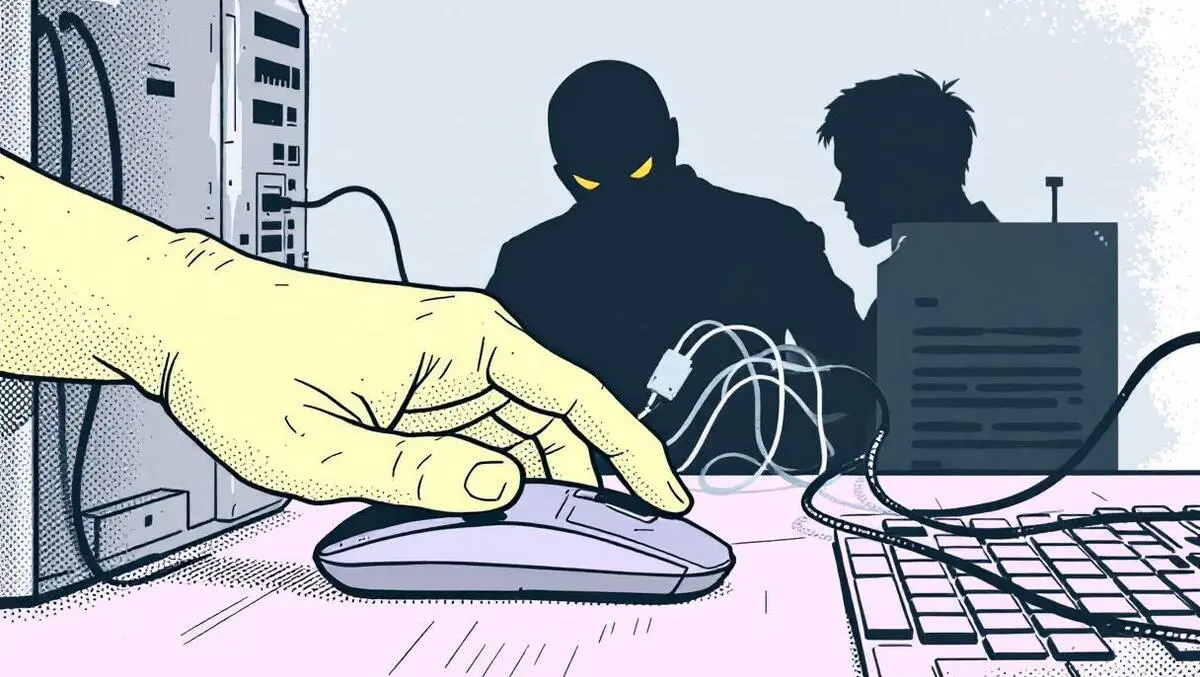
ReliaQuest report exposes rise of social engineering cyber threats
ReliaQuest has released its latest quarterly report, outlining identified trends in cyber attacker techniques, malware use, and ransomware group activity observed between March and May 2025 across its customer base.
ClickFix and social engineering tactics
One of the most notable trends identified in the report is the widespread use of ClickFix, a social engineering method that misleads users into pasting malicious commands into tools such as PowerShell or the Windows Run prompt. Attackers disguise these actions as solutions to false issues, such as fake CAPTCHAs or Windows updates, enabling them to circumvent defences and introduce malware with comparative ease.
This approach has facilitated the increased use of malware families such as Lumma and SectopRAT, both of which utilise trusted tools like MSHTA to deliver malicious payloads. The report notes that social engineering has significantly contributed to the rise of these attack vectors, stating, "Social engineering played a pivotal role in the success of these top tactics."
Lateral movement and initial access trends
Phishing-based techniques accounted for over half of observed initial access incidents among customers, while drive-by compromise incidents rose by 10% compared to the previous period. The report sees a shift, as attackers increasingly rely on user manipulation rather than exploiting technical vulnerabilities.
ReliaQuest's analysis highlights the prominence of remote desktop protocol (RDP) over internal spear phishing as a method of lateral movement within networks. This shift is closely associated with attackers impersonating IT helpdesks to persuade users to install RDP tools. The report finds, "The shift away from tactics like internal spearphishing suggests attackers are favouring techniques that require less user interaction and offer more direct access to internal systems."
Additionally, drive-by downloads powered by campaigns such as ClickFix and widely available phishing kits continue to lower the threshold for cybercriminal activity. External remote resources dropped from third to fourth place among initial access vectors, further illustrating the focus on exploiting human factors.
MSHTA on the rise for defence evasion
MSHTA (Microsoft HTML Application Host), a native Windows binary, was reported to be involved in 33% of defence evasion incidents during the period, up from just 3.1% the previous year. Attackers use this legitimate tool to bypass conventional security tools by convincing users to execute malicious commands themselves, often delivered through social engineering campaigns such as ClearFake.
"ClearFake's early adoption of ClickFix techniques propelled MSHTA from 16th to second place among defence evasion tactics. Recently, other ClickFix adopters have fuelled MSHTA's current surge, leveraging broader social engineering tactics to bypass defences more effectively," the report details.
Changes in ransomware operations
The report notes significant changes among ransomware groups, with the closure of "RansomHub" leading many affiliates to migrate to other groups, notably Qilin, which saw a 148% increase in activity. Play and Safepay also reported increased activity of 116% and 266%, respectively. The number of active ransomware groups has dropped by nearly 30%, but newer or established ransomware-as-a-service (RaaS) platforms have absorbed most of these affiliates, raising concerns over increasingly professionalised threats.
"With major ransomware groups like RansomHub gone, RaaS operators are vying to capitalise on the influx of affiliates searching for new platforms. To attract this talent, we'll likely see RaaS platforms introduce innovative capabilities or revise profit-sharing models. This competition is expected to create a more fragmented yet increasingly sophisticated ransomware ecosystem, posing even greater challenges for defenders."
Impact on industry sectors
The construction industry was the only sector to see an increase in ransomware attack victims, rising by 15%. ReliaQuest attributes this to opportunistic targeting as attackers seek out industries with perceived weaker defences. The report notes, "Construction organisations may feel compelled to pay ransoms quickly to avoid costly downtime and operational delays, making them attractive targets." By contrast, the retail sector saw a 62% decrease in victims, attributed to a drop in activity from the "CL0P" ransomware Cleo campaign.
Malware trends and threat actor activity
The period saw increased activity by the SectopRAT malware, delivered via ClickFix and malvertising campaigns. Despite infrastructure takedowns in May 2025, Lumma infostealer operations continue, with new logs advertised on cybercriminal forums and marketplaces.
"Although Lumma's activity is likely to decline over the coming months as the impact of the takedown continues to unfold, it's likely the group could regain traction over time. As attention around the takedown diminishes, attackers may return to this familiar and well-established tool," the report comments.
Emergence of Scattered Spider
Scattered Spider, after a five-month hiatus, returned in April 2025 with attacks on UK retail organisations. The group is identified for using detailed social engineering against high-value individuals such as CFOs and utilising both on-premises methods and cloud techniques for stealth and control. "Scattered Spider's success lies in its ability to combine social engineering precision, persistence in cloud environments, and on-premises technical expertise. These TTPs allow the group to achieve initial access, maintain control, and operate stealthily, making it difficult for organizations to detect and remediate the group's activity in the early stages of an attack."
Recommendations and defensive measures
ReliaQuest's report makes several recommendations for organisations, including disabling Windows Run for non-administrative users, enforcing control over RDP tool installations, implementing web filtering, and prioritising user training against social engineering. Additional measures include strengthening identity verification, enabling advanced monitoring, and conducting regular risk assessments, particularly for privileged user accounts.
Looking ahead, the report anticipates broader adoption of ClickFix among ransomware affiliates, increased sophistication by groups such as Scattered Spider, and the continued rise of infostealer malware like Acreed.
The report concludes by emphasising the need for proactive investment in advanced detection, user education, and securing of both cloud and traditional infrastructure to counter an upward trend in attack complexity and evasion tactics.


